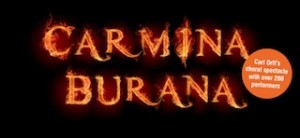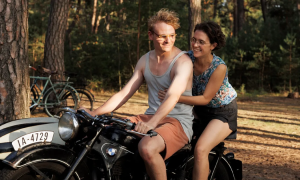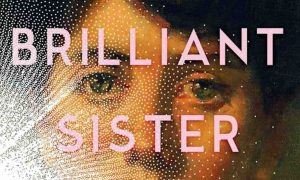 The Adelaide Symphony Orchestra brought to the Festival Theatre stage more than 200 performers for the choral and orchestral spectacular; Carl Orff’s Carmina Burana.
The Adelaide Symphony Orchestra brought to the Festival Theatre stage more than 200 performers for the choral and orchestral spectacular; Carl Orff’s Carmina Burana.
The concert opened with the symphonic poem by Sergei Rachmaninov, “Isle of the Dead” op 29. Inspired by Swiss symbolist artist Arnold Böcklin’s painting of the same name, the mythological ferryman of the dead rows a corpse to an island across the Underworld River Styx. The ASO beautifully depicted the ominous water journey, contrasting haunting drama with some surprisingly light aspects; a very enjoyable after death experience.
As expected, the main attraction opened in no small way. Many film watchers, beer drinkers, and aftershave wearers know O Fortuna. However, this live performance of the 24 medieval poems Carl Orff turned, in 1935, into the scenic cantata Carmina Burana, delivered so much more than could ever be promised by emotive advertising.
Carl Crossin’s Adelaide Symphony Chorus (incorporating Elder Conservatorium Chorale and Aldis Sils’ Marryatville High School Choir) was a force to be reckoned with, delivering exacting diction, requisite subtleties, and, of course, the passionate fortissimos so integral to the popularity of this piece.
Conductor Nicholas Carter directed this colossal work to goose-bump effect. Promising us “a captivating journey for orchestra, choir and audience alike”, he married orchestra and massive chorus together superbly, with only a glimpse of bass voices threatening to outrun their leader. Carter put his own stamp on the interpretation, setting a brisk pace, and brilliantly balancing Orff’s striking woodwind, brass and percussion parts.
Orff’s demanding solos, designed to increase drama throughout, were handled masterfully. Soprano Milica Ilic (a.k.a. the “girl in a red tunic”) consistently shone, but the delivery of Dulcissime, ah (Sweetest Boy) was nothing short of spine tingling. Tenor Paul McMahon leant heavily on drama to great effect for the solo with male chorus, Olim lacus colueram (Once I love in the lakes) as he evoked sympathy for his suffering and departing swan. Baritone Samuel Dundas delivered an extraordinary Dies, nox et omnia (Day, night, and all things) displaying his sweet falsetto versatility, juxtaposing his marvellous rich tones throughout.
A nod to the very impressive ragazzi/ragazza chorus made up of choristers from Christie Anderson’s Young Adelaide Voices. Aged 9-14, the children’s chorus sang music-less; their part in the Tempus est iocundum (The season is pleasant) standing out for wonderful clarity, diction and tone.
Carmina Burana summary: Fate, fortune, love, lust, power, gambling, drinking, and gnashing of teeth. With 200 performers.
This was a stellar performance of an awe inspiring piece of music and richly deserved the standing ovation it received.
Last massive show tonight.
(I’d go again, but I feel the need to splash on some Old Spice, drink draught beer, and watch Excalibur.)
Reviewed by Gordon Forester
@GordonForester
Venue: Adelaide Festival Theatre
Season: 16 & 17 May 2014
Duration: 105 minutes
Tickets: $20 – $109
Bookings: Bass




















